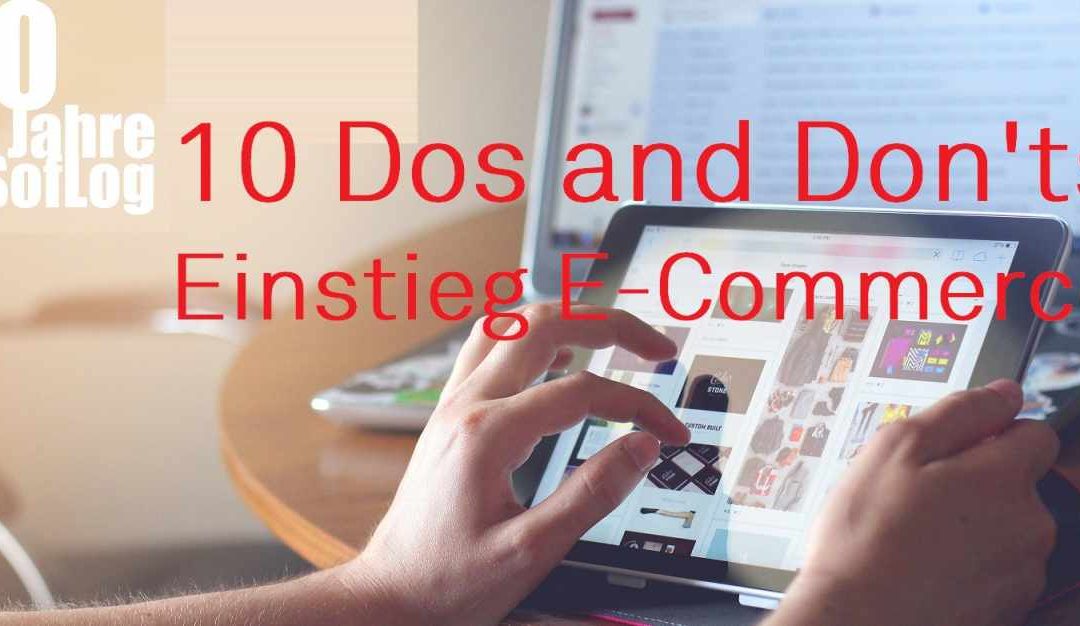E-commerce is booming in Germany – also in the business-to-business sector. Many companies are faced with the question whether they should or even have to expand their sales channels with an online shop. The entry into e-commerce is an undertaking that offers many potentials, but also challenges. We have summarised the 10 Dos and Don’ts for you.
- Structured Approach
Don’t make any rash decisions. The entry into e-commerce requires a structured analysis of the potential (business case) and even under time pressure it makes sense to follow a methodical approach.
- Analyse the Business Model
First of all, the business model including customer and article structure as well as the business processes should be analysed and evaluated regarding the potential for digital distribution channels.
- Define Channel Strategy
Depending on the customer and article structure, the next step is to define the medium and long-term channel strategy (e.g. single channel, multi-channel, omni-channel, no-line channel). Here it must be decided which product is to be sold via which online channel to which customer group.
- Define Scenarios for Business Development
For articles, orders, deliveries and system users, the quantity structure for the future business volume in the corresponding distribution channels must be estimated. Since different risks can lead to fluctuations in demand, it is advisable to derive scenarios for different business processes. This is necessary, on the one hand, for the design of future IT components and, on the other hand, for the definition of the necessary new business processes.
- Investment in Digital Technologies
Before the implementation of the channel strategy can begin, the digital technologies required for this (e.g. marketplace, online shop) and the corresponding implementation partners or agencies should be selected and compared. Since this is a comprehensive and far-reaching investment decision for a company, the costs and benefits must be compared technically and commercially before a final decision is made. In advance, a calculation of all cost items associated with the introduction of a new channel strategy should be made.
- Consider Direct and Indirect Costs
Total Cost of Ownership consideration is the decisive keyword. Don’t neglect the direct and indirect costs of using and operating digital technologies; cost analysis should not be limited to the one-time acquisition costs, but must consider all costs over a longer period of time. This is the only way to realistically estimate the expenditure.
7. Integrate Digital Technology into the Distribution Channels
Once the decision for a solution package consisting of digital technologies and implementation partners has been made, it must now be implemented in the corresponding processes in accordance with the previously defined channel strategy. This includes, in addition to the offer to the customer, the adaptation of internal commercial and logistical business processes. Processes such as invoicing, labeling, etc. should be considered at the same time.
- Changing Business Processes in Forward and Reverse Logistics (Returns)
In particular when switching from a purely stationary business model to digital offers in e-commerce, the effects on the processing of customer orders are very large. Business processes must be adapted in advance to ensure that order management functions smoothly.
- No Simultaneous Conversion of Several Sales Channels
Less is sometimes more. The parallel conversion of several sales channels is a very complex task. That is why a step-by-step adjustment is particularly useful for small companies.
- Communication Towards Customers (Communication Concept)
For certain customer groups, the change in the sales model can mean a significant change in their buying habits. It is therefore important that all changes are communicated transparently in customer communication. Take your customer with you right from the start so that they can get used to the new situation step by step.
Further information can also be found in the free market study „Onlineshop-Systeme zur Digitalisierung des Handels – Überblick über Anbieter und Funktionen“.
Our expert:

Dietmar Ebel
is head of the ERP-Logistics team at the Fraunhofer Institute for Material Flow and Logistics IML and author of the market study
